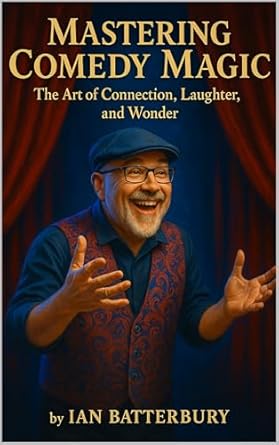I want to use more Spanish in my show, however it’s challenging. One idea I had the other day was to have a a “live translation” thru Google Translate on my phone.
An idea I like was to have an audio track play and someone from the audience who spoke Spanish could translate it for me. My first idea for the frame work would be Card Under Seat with the repeat after me style presentation. I’m not 100% sure this will play how I hope it would, but I may write up something and give it a try.
Another idea is to use cue cards that are in Spanish and have the person read them.
All of these ideas would incorporate Spanish and be more inclusive to Spanish speakers without me having to be better at Spanish. Yes, I’m still working on being a better Spanish speaker, but it’s just another way to get Spanish into the show.
-Louie
Rainy Day Show
I do my best to not cancel shows at fairs due to rain. Yes, there are times to not do the show, like if the stage isn’t covered and my gear is getting rained on. It’s important to look down the road, and if my show props get damaged today and I can’t work next week, that’s a problem.
Last week I was at a fair and it was the morning show, so it was slower and it was raining. Normally what I would do is stand on stage and work on jokes or routines that don’t involve spectators. But I’m on stage and on mic the for my time slot. I just happened to have my crank organ with me, so I put it onstage and played some music!
@louiefoxx Playing the organ because my magic show got rained out! #vanhalen #jump #organ #music #rainyday ♬ original sound – Louie Foxx
After a couple of songs it drew about 8 people over, I gave them chairs onstage so they weren’t on the rain. Then I did a close up magic show for them. It was fun and the show still happened!
Don’t just cancel shows, try to make something happen! It’s fun and takes you out of your normal routine!
-Louie
Wes Barker Show
It’s taken bit to get to posting about this, but about a month ago I went out to see Wes Barker‘s show when he was in Seattle. Before the show I met up with Eric and Alyss Stevens for a quick drink.
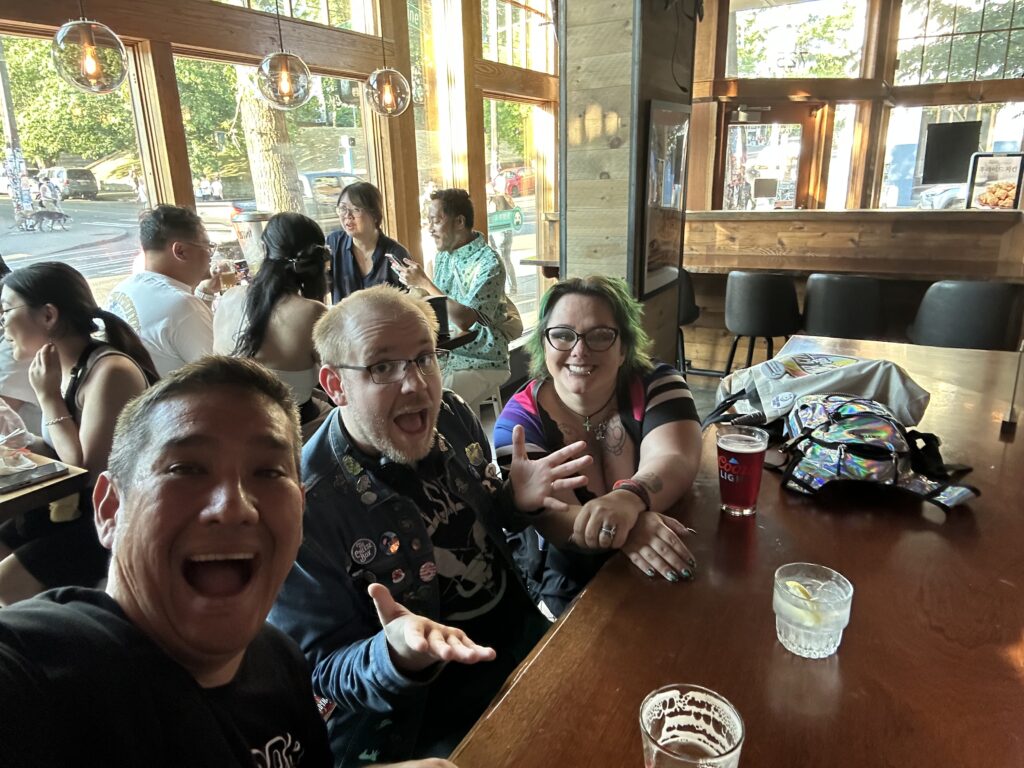
Then on the walk to the venue, we ran into another magician Brian. When we got to the venue, we ran into Wes taking tickets.
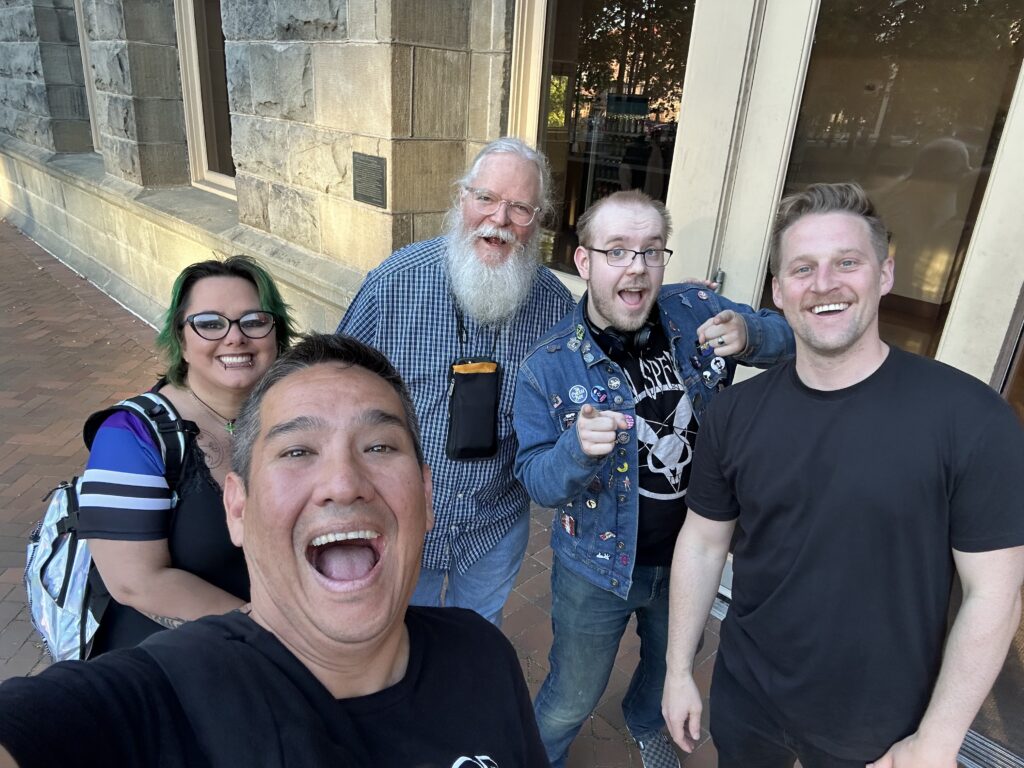
There was a miscommunication about booking a ticket taker with the venue, so Wes did it. He was great taking tickets. He handled it really well and was essentially an opening act to his show. The show was Wes and two comedians.
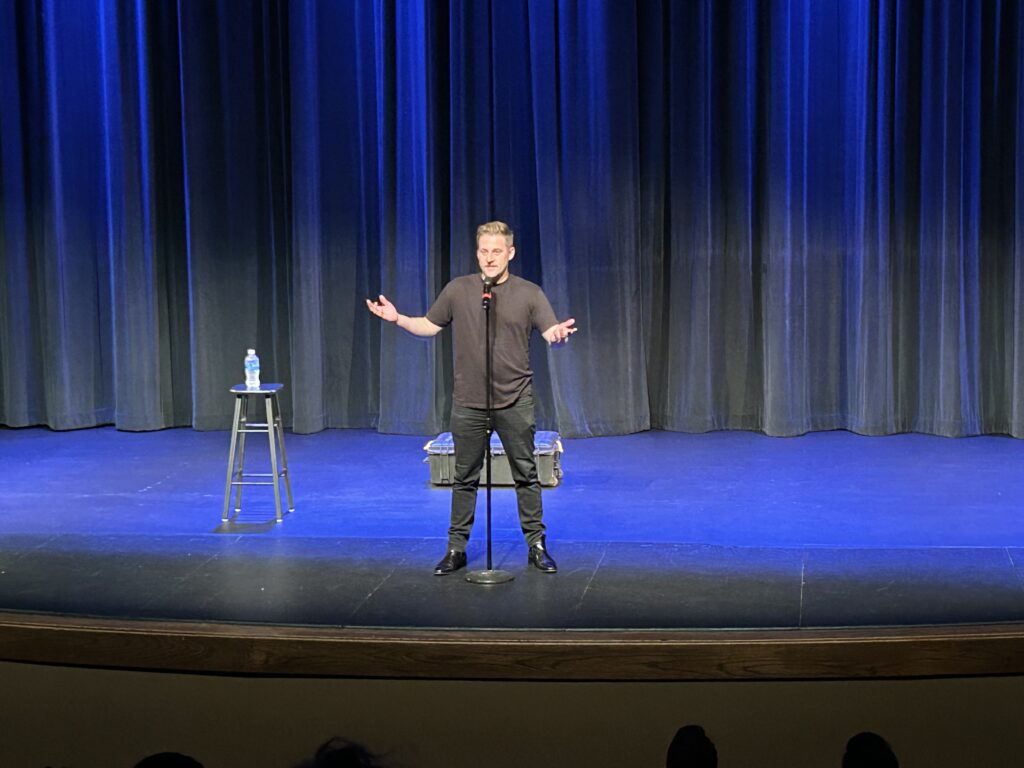
Wes is a great example of what a modern magic show is. Not a ton of props and a lot of personality. There was one idea in his show that I thought was amazing and wish I had thought of it. The whole show is really great with a lot of surprises. If he’s in your area, it’s totally worth checking out his show!
After the show Eric, Alyss, Brian and I had a little magic jam.
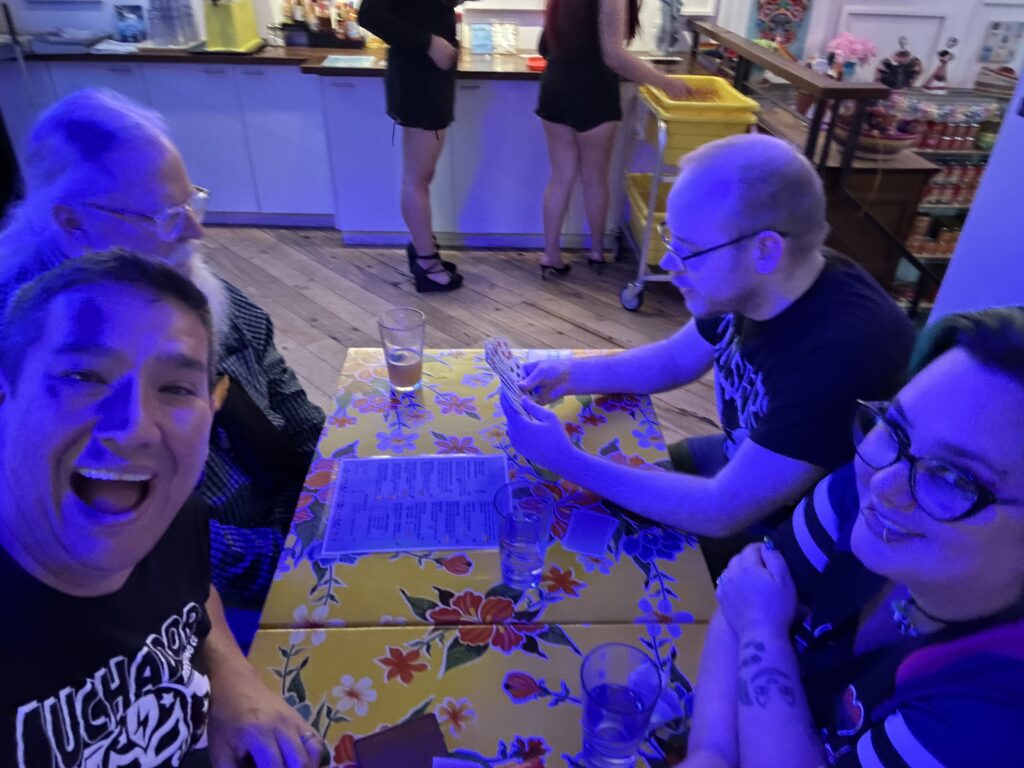
I do love seeing shows that inspire me to be better!
-Louie
The Crated Coin by Mark Strivings
Recently I came across The Crated Coin by Mark Strivings. This is a coin flip routine where you play “heads and tails” with the whole audience.
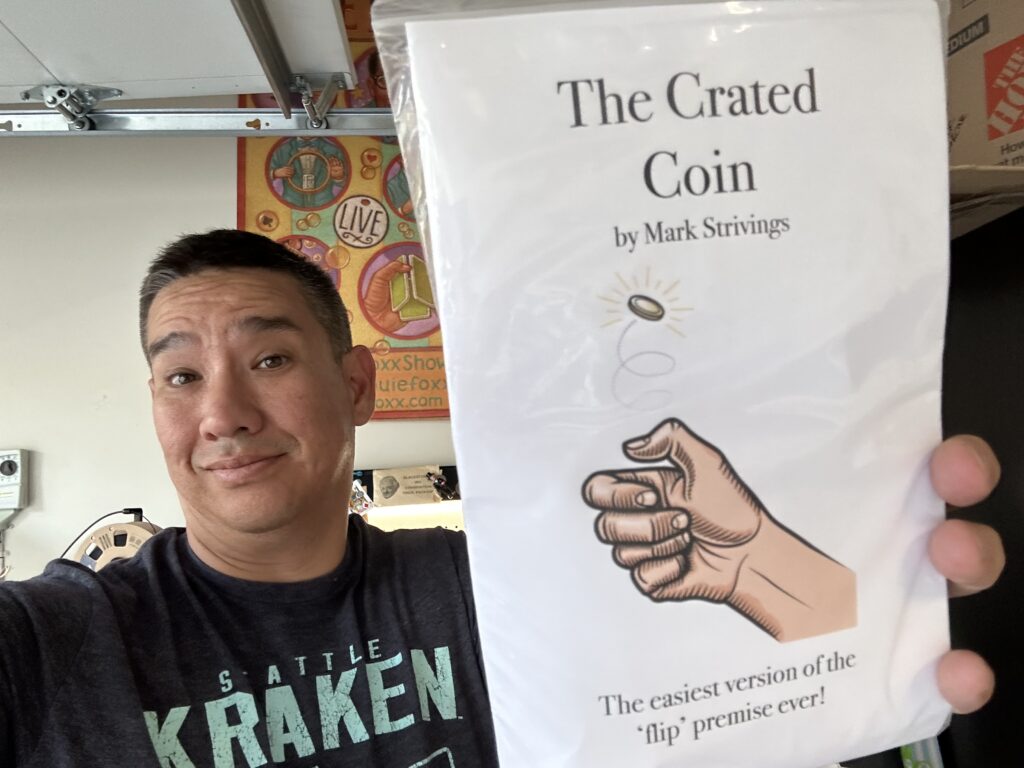
I’ve been playing with this premise as part of a larger routine. I’ve played with several other versions of the trick, however the main problem I have is dropping the coin. Mark’s solution, which he says is based on a Gaeton Bloom thing is to have the token put in a case and shaken. That makes it incredibly difficult to drop the coin. You are in 100% control of the result of the flip.
This also has the bonus of the sound factor of the token being shook inside the case. I’m a fan of this method!
-Louie
Mastering Comedy Magic by Ian Batterbury
On the plane the other day I read Mastering Comedy Magic by Ian Batterbury. This book goes through different techniques and objectives with using comedy in a magic show. The book says it’s intended for beginners at comedy magic. I would say it’s for beginning at adding unique comedy to their magic.
The difference is that there are a lot of comedy magicians out there who have never had an original thought in their life. They are doing Banana Bandana, or whatever using the jokes the trick came with, or worse using the jokes they’ve seen other people do without permission.
This book is a general “theory” of performing comedy magic, without much in the way of tools, like how a joke is structured. If you’ve never created your own original script for a routine, this book will give you some good guidelines to help you out. With it only being about $10 on Amazon, it’s worth looking into.
-Louie
PS Another good book to look into is Ryan Kane’s Out of Stock
Be Easy!
I was working at an event with a lot of bands. The tech sheet for for the band had each band tech needs, contact people and number of people in the band. This is helpful for the sound company, so they no what to expect.
This event’s tech needs had a little easter egg to give the sound company a heads up:
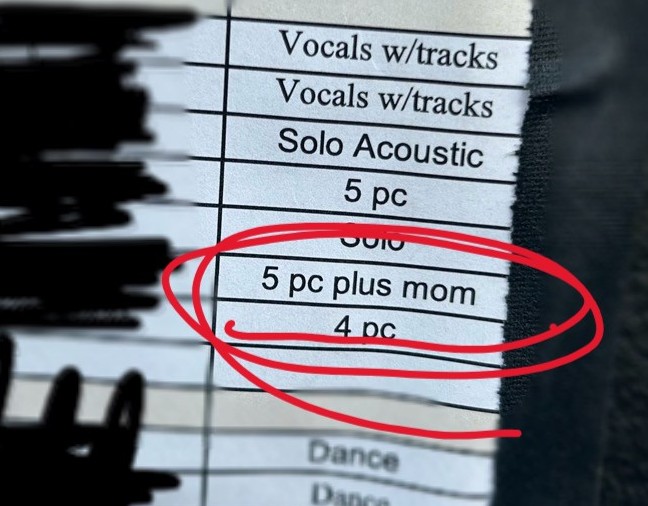
I try to be easy to work with, and not to become the act that they put notes about to warn the tech crew!
-Louie
Magic Show Script Writing…

Every year in my library show I try to have at least one trick that has a life larger than that show. Something that I’ll try to put into my main show. One of the new routines that I have been doing in my library shows uses a Cootie Catcher/Paper Fortune Teller.
This routine has been doing well, and it’s a great little solo routine that’s compact a trick that packs flat, but because it’s a three dimensional trick that moves, it has a bit more visual texture than a flat prop.
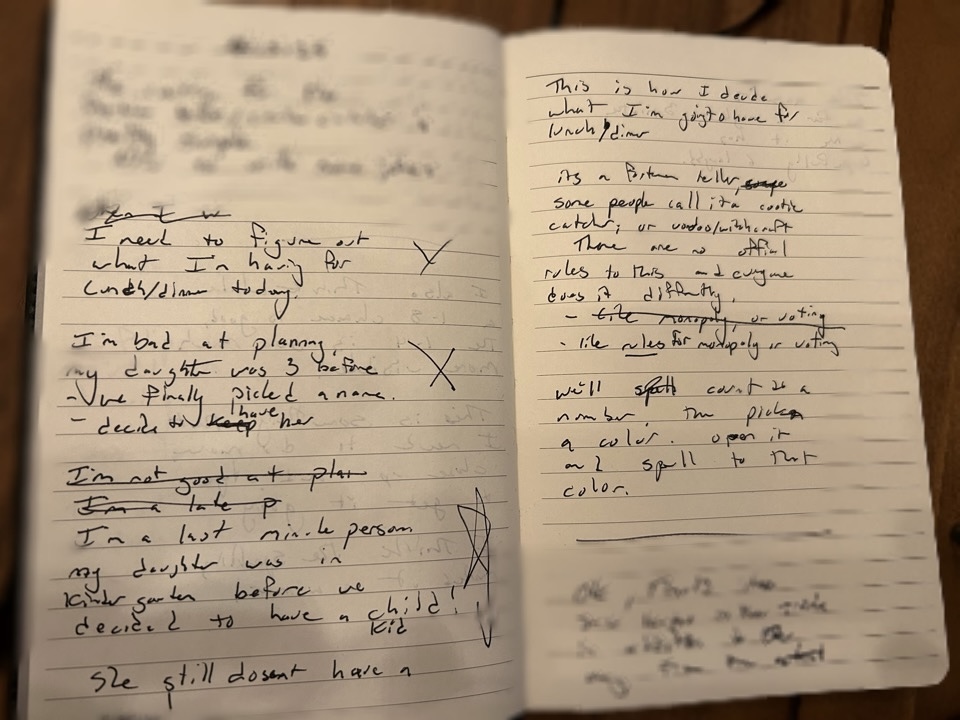
There’s not a ton to the routine that I’m working on. It’ll hopefully have 6 laughs in two minutes. I’m always looking for solo tricks that I can do without someone from the audience onstage.
-Louie
Vintage Magic!
Magicians always ask me where I get a lot of the vintage magic props. I seek them out while I’m travelling. When I was performing in Napa, CA I found someone with a box of magic from the 1970’s. Here’s a quick video of it:
@louiefoxx Hunting for Vintage Magic Tricks #magictricks #magic #treasure ♬ original sound – Louie Foxx
Honestly, this box was just “meh” for me. There’s one thing that I want for my personal collection.
I am kinda excited to try to 3d print the gimmicks the two die boxes. It shouldn’t be too hard and they’re not complex shapes. The challenge will be making the hinge for the yellow die, but even that shouldn’t be too difficult.
For fun, I had AI make me a painting of the magic props on the desk of my hotel room.
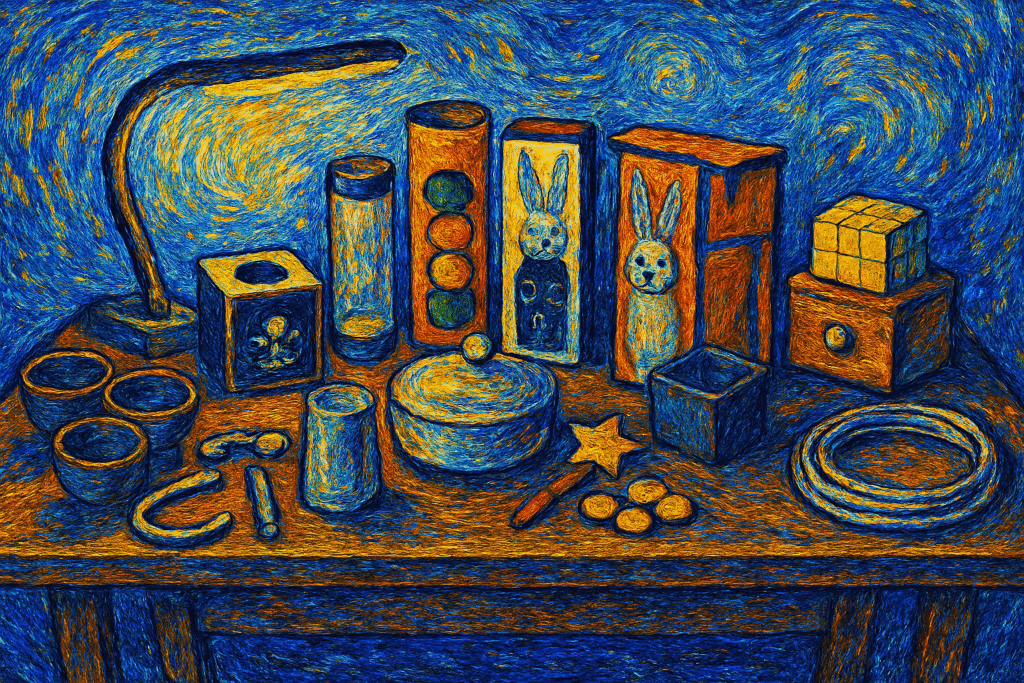
Both Sides of a Magic Trick
I was playing around with some ideas of tricks to record with my Ray Ban Meta Glasses. One of the neat things is that if I do a magic trick to a mirror, you can record both sides of the trick simultaneously.
Here’s my attempt at doing that:
@louiefoxx Backstage at the magic show #cardtrick #magic #mirrior ♬ original sound – Louie Foxx
I think it came out well and is a good choice of trick as both sides of the card change, so there’s a good reason to show both sides of the cards!
-Louie
Pacific Coast Association of Magicians convention
I’m honored to be one of the three (maybe four) featured presenters for this years Pacific Coast Association of Magicians convention in October!
You can get more info or register for the convention at: https://pcammagic.com/convention

One of the cool thing they’re doing this year is having the presenters do a full show. It’s a great way to give context to the presenter and personally I think a lot more is learned from a full show than seeing an act.
Here’s info on the three presenters:
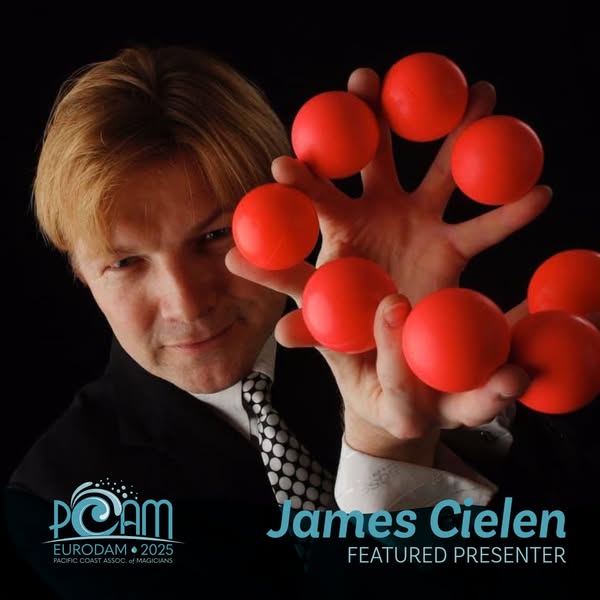
James Cielen is one of only eight magicians to win the Gold Medal for Excellence in Stage Performance from the International Brotherhood of Magicians. Even better proof of excellence is the successful career which has followed, including what may be the longest-running contract in the history of cruise ship magicians. We’ll get to see James on his home turf, thrilling audiences in the 890-seat World Stage theatre, plus a PCAM-exclusive talk where we can learn from his experience.
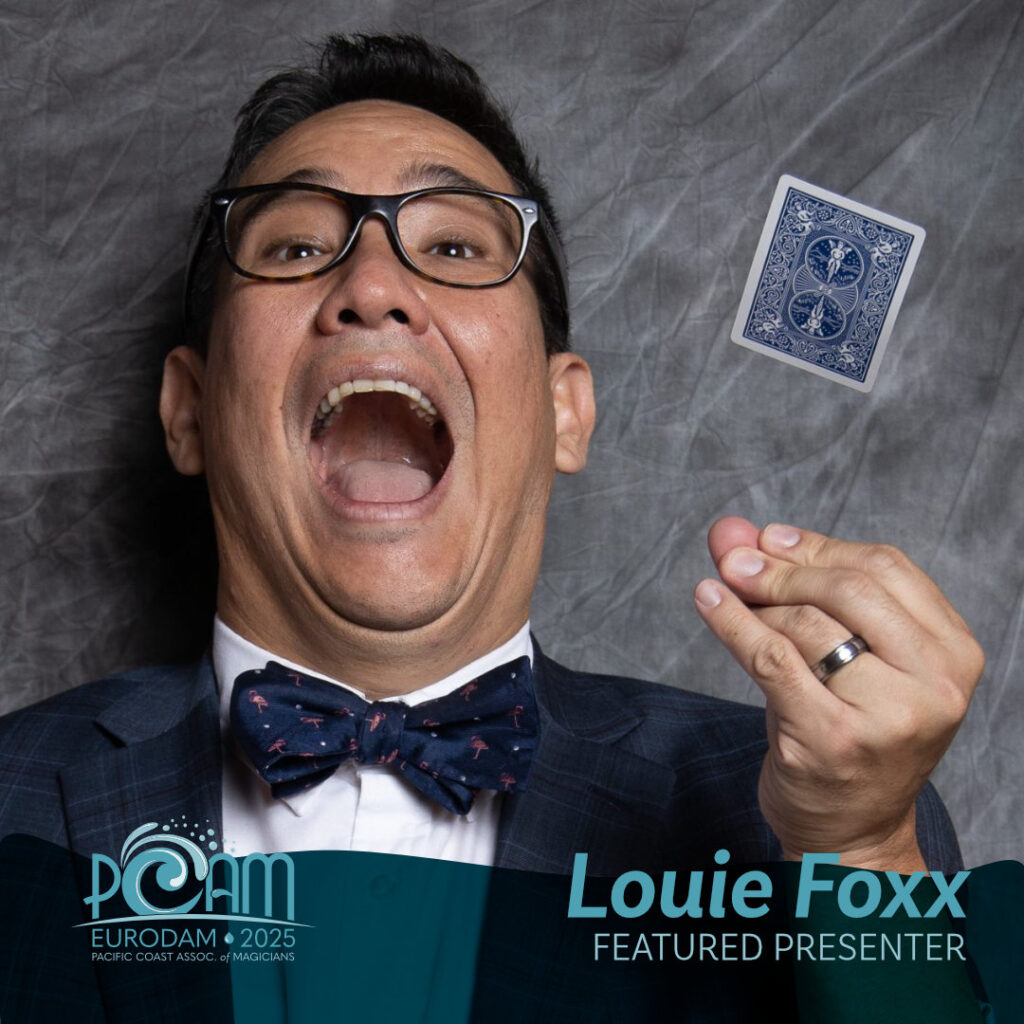
Louie Foxx never stops. He never stops moving, on the road as one of the busiest entertainers in the Pacific Northwest, delighting audiences of kids, families, adults, and seniors in every town along the way. He never stops learning, as an avid collector gaining hands-on insight to the history of magic and magicians through long-lost props. He never stops creating, inventing wildly original tricks grounded in the practical needs of a working pro. Louie will inspire you to get your magic moving!
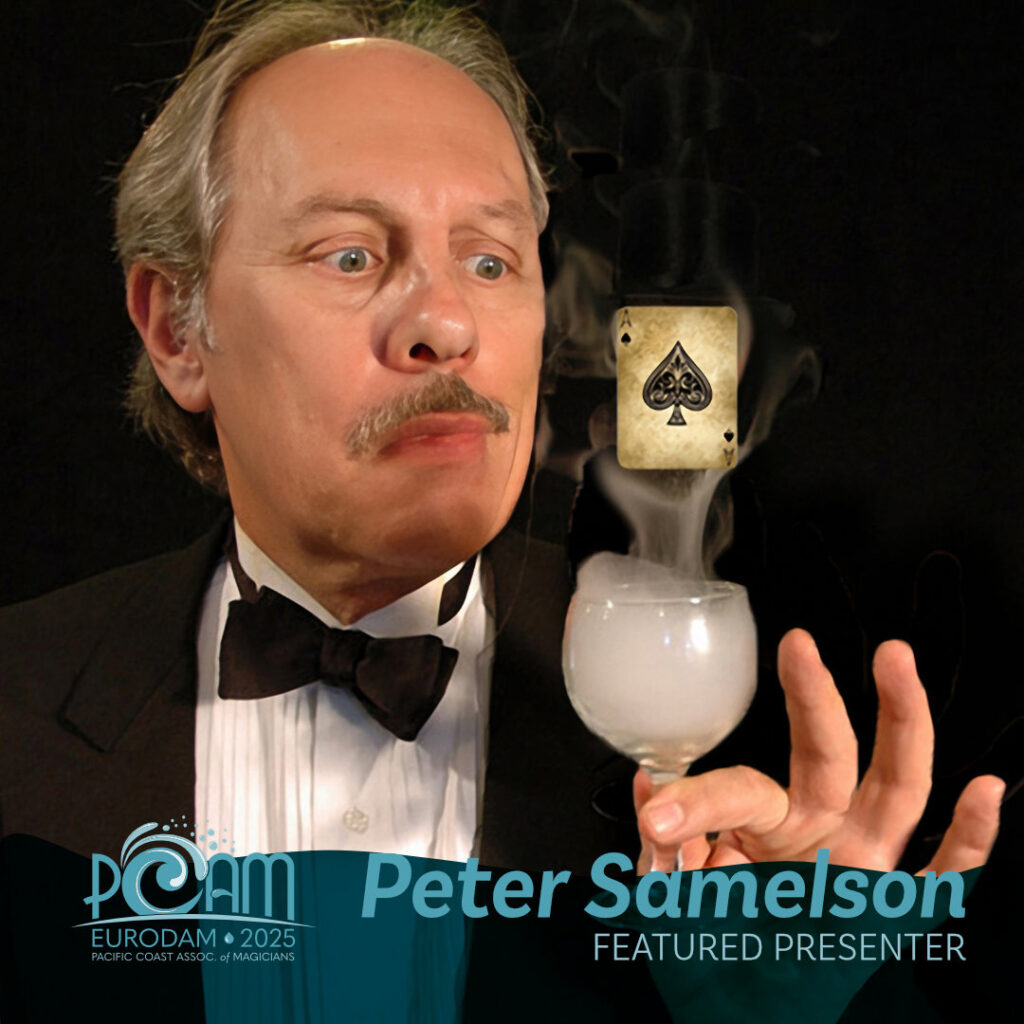
On a recent Fool Us performance, Penn praises Peter Samelson as “one of the greatest living magicians,” and Jamy Ian Swiss writes “I used to say that Peter Samelson is the most influential magician you’ve never heard of.” Except the secret is now out. From his groundbreaking publication Theatrical Close-Up to producing the longest running Off-Broadway Magic Show in New York City, he shows his commitment to performing magic as an artist. He’ll be teaching us, by example, what it means to experience magic.
To get in on this amazing week of magic and good times, be sure to register at https://pcammagic.com/convention

